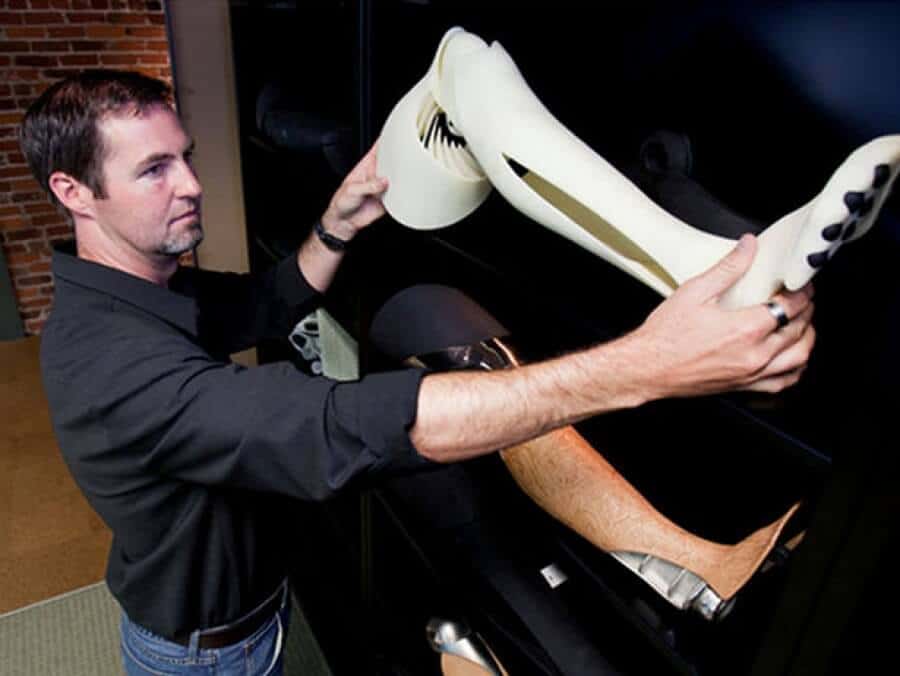A revolutionary technology that is still being developed intends to be part of the most brilliant technologies in the world. This is a process that turns 2D designs into and actual three-dimensional objects like toys, computer chip, models for your project, etc. The 3D printer aside from printing these utilities, it also finds a great usage in biotechnology, and a very promising technique to create complex cells and organic materials that help the organic engineering develop even more, by also replacing the missing parts of the body.
This technology is not only being used in aerospace or building parts for an automobile or any jewelry, it is also essential for health care and the replacing any of the body parts. The process of creating an object goes layer after layers into creating the actual object with the help of the digital blueprint.
Beside creating shapes like a plastic guitar, or being used on architecture on building models for presentations, or repair a part of the computer or the chip or any toy, it also plays a huge role in the medicine field.
Early Stages of this development
The very early stage of development for the 3D printer is the year 1980. The idea for a new technology like 3D printer was way before that year, where they imagined a printer which could allow prototypes to be examined and designed very carefully, then produce it. Comparing the development back then, we see a huge change over this past period of time. The famous Massachusetts Institute of Technology was the place of the earliest development of this revolutionary technology. Its name came from MIT during the 1990, and ever since then it has given licenses to around six companies.
The rejection issues
Starting from donated organs to being able to create homegrown body parts to the vexing problems that the doctors are facing, the idea of the rejection issue comes from the person’s own cells that is likely to mitigate the problem and for its organ to be rejected. Patients are the one that remain on drugs that they will have to use for the rest of their life in order for the body to not reject the new part that was made. The research done on animals, the new drug used was tested and resulted positive.
Experimental methods of using 3D printing in organs or tissues using stem cells.
Because of its early development stages, the 3D printer needs much to work on, in order for it to be used regularly. It is a printer that up to this point has arrived to print a new bone and cartilage. But also other parts in biochemistry, like human embryonic stem cells, blood vessels or the ligaments even nerves.
Scientists consider this technology as a way to also print even more complex organs likes heart, kidney parts or a liver. Furthermore, they believe that by printing cells, cancer will be on the way to be cured.
More information on biochemistry and technology!
Steam cells are used in the 3D printing, using embryonic stem cells, from which the bone marrow prints a trachea where the cells that tighten together, make this process much easier. Printing biomaterial and the artificial transplant differ with each other. There are companies that use this method to make cells instead of plastic things or metal. Stem cells are an important role in the process. The revolutionary technology is also promising on replacing different body parts which up until now were not possible.
Doctor’s point of view on the 3D printer
As this will develop even more the medical field, it is important to mention how the humans will be affected in the future. According to Dr. Jayne Lawrence, on a study she did on 3D printer, she stresses the fact how people, that require a lot of pills on long term diseases, for instance, HIV, forget, or miss the terms, or simply don’t take them correctly. The 3D printer will allow the doctors to formulate tablets for the patients, in that way, where based on the illness, they will be able to combine treatments to specific persons.
Scientists also see the future where they could target changes like the illness that each patient have and is being caused by different molecular and genetic changes. They see the 3D printing as a way for a potential solution.
According to the Director of the Wake Forest, Mr. Anthony Atal, using the methods of a layer by layer to print human organs in the future, will be one of the most extraordinary inventions of all times. Another fact is that the collagen being added to a supportive material and to add that collagen in the cartilage cells and leave it grow, has been such an interesting process, and motivational for the scientists.
The ethical part of the 3D printing is being debated everywhere. Once it comes to talk about the 3D printing and especially creating a liver, for instance, the religious part and the ethical part comes along. According to a researcher, Pete Basiliere, 3D printing is able to manufacture organs but has raised inevitable ethical issues and also moral dilemmas. On the other hand, Gartner, on their article, states that 3D printing is an issue to debate on Ethics and Regulation. The article also expresses the initiative that is raised in questions being made on how will be controlling the ability of production!
Support us!
All your donations will be used to pay the magazine’s journalists and to support the ongoing costs of maintaining the site.
Share this post
Interested in co-operating with us?
We are open to co-operation from writers and businesses alike. You can reach us on our email at cooperations@youthtimemag.com/magazine@youthtimemag.com and we will get back to you as quick as we can.









